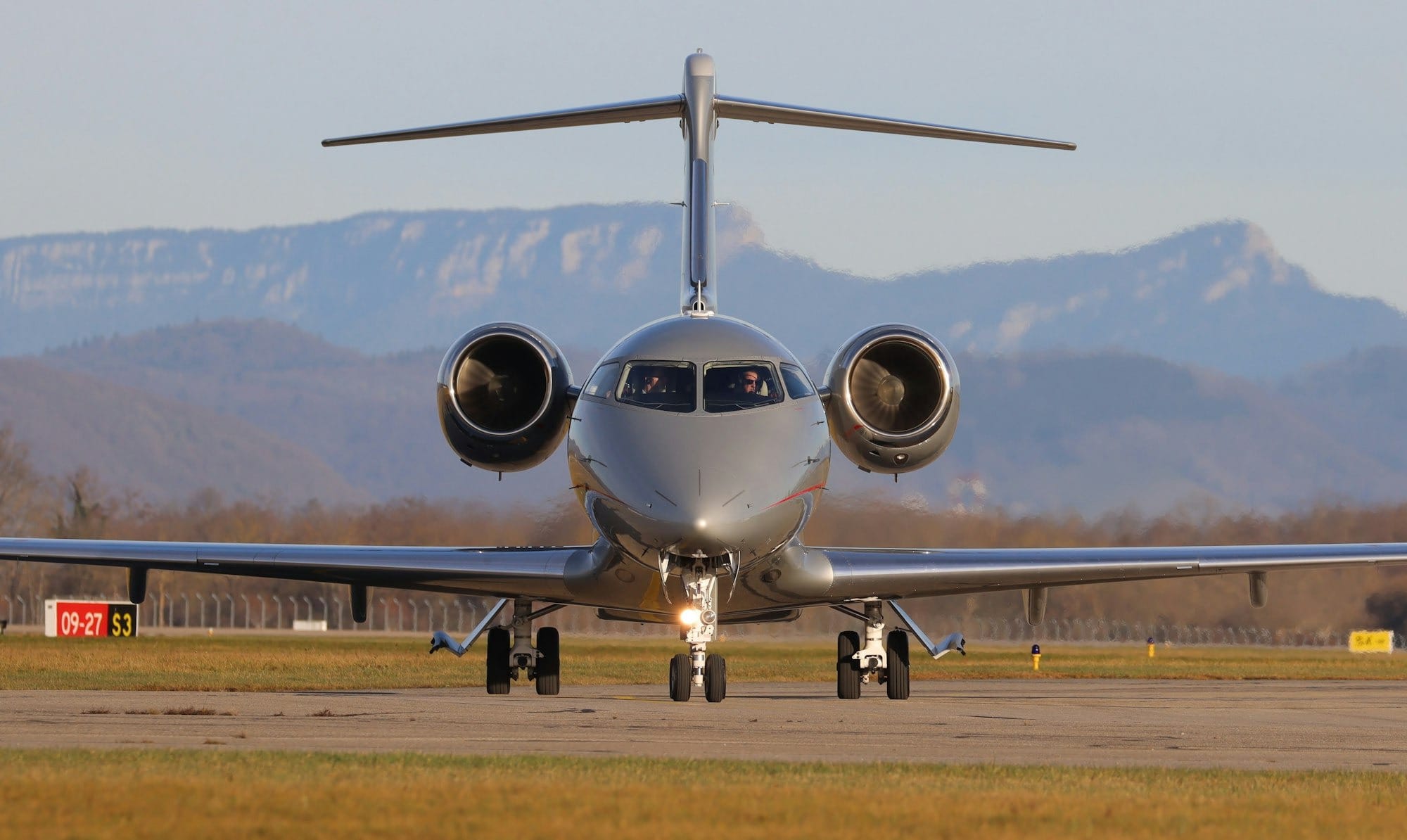Air Traffic Rights: The Third Freedom of the Air Explained
The third freedom of the air allows an airline to carry passengers or cargo from its home country to another country. This freedom is crucial for international trade and tourism, facilitating economic growth and cultural exchange.

Air Traffic Rights: The Third Freedom of the Air Explained
Introduction to the Freedoms of the Air
The third freedom of the air allows an airline to carry passengers or cargo from its home country to another country. This freedom is crucial for international trade and tourism, facilitating economic growth and cultural exchange. Understanding the third freedom of the air helps in comprehending the broader framework of international aviation rights.
The freedoms of the air are a set of commercial aviation rights granting a country's airlines the privilege to enter and land in another country's airspace. These freedoms are essential for the global aviation industry, enabling airlines to operate international routes and connect different parts of the world. There are nine recognized freedoms of the air, each with specific rights and limitations.
The third freedom of the air is particularly significant as it allows an airline to carry passengers or cargo from its home country to another country. This freedom is a cornerstone of international aviation agreements and plays a vital role in facilitating global trade and tourism. Understanding the third freedom of the air provides insight into the complexities of international aviation and the regulatory frameworks that govern it.
Historical Context of the Third Freedom of the Air
The concept of the freedoms of the air originated from the Chicago Convention of 1944, which established the International Civil Aviation Organization (ICAO). This convention aimed to promote the safe and orderly development of international civil aviation. The third freedom of the air was one of the initial five freedoms agreed upon during this convention.
The third freedom of the air was designed to foster international cooperation and economic development by allowing airlines to transport passengers and cargo between countries. This freedom has since become a fundamental aspect of bilateral and multilateral air service agreements, shaping the landscape of global aviation. Its historical significance underscores the importance of international collaboration in the aviation industry.
Legal Framework Governing the Third Freedom of the Air
The third freedom of the air is governed by bilateral and multilateral air service agreements between countries. These agreements outline the specific rights and obligations of the airlines involved, ensuring that the third freedom is exercised within a structured legal framework. The ICAO plays a crucial role in facilitating these agreements and providing guidelines for their implementation.
These agreements typically include provisions on route rights, capacity, and pricing, among other aspects. They are negotiated based on mutual interests and reciprocity, ensuring a balanced exchange of aviation rights. The legal framework governing the third freedom of the air is essential for maintaining a fair and competitive international aviation market.
Economic Impact of the Third Freedom of the Air
The third freedom of the air has a significant economic impact, contributing to the growth of international trade and tourism. By allowing airlines to transport passengers and cargo between countries, this freedom facilitates the movement of goods and people, boosting economic activity. It enables businesses to expand their markets and access new opportunities, driving economic development.
Tourism is another sector that benefits greatly from the third freedom of the air. By connecting different countries, airlines can attract tourists from around the world, promoting cultural exchange and generating revenue for local economies. The economic impact of the third freedom of the air highlights its importance in fostering global connectivity and prosperity.
Case Study: The Role of the Third Freedom in the US-EU Open Skies Agreement
The US-EU Open Skies Agreement is a prime example of the third freedom of the air in action. This agreement, signed in 2007, allows airlines from the United States and the European Union to operate flights between any point in the US and any point in the EU. The third freedom of the air is a key component of this agreement, enabling airlines to transport passengers and cargo across the Atlantic.
The US-EU Open Skies Agreement has significantly increased the number of flights and routes between the US and the EU, enhancing connectivity and competition. It has also led to lower airfares and improved services for passengers. This case study illustrates the practical benefits of the third freedom of the air and its role in promoting international aviation.
Challenges and Limitations of the Third Freedom of the Air
Despite its benefits, the third freedom of the air is not without challenges and limitations. One of the main challenges is the negotiation of air service agreements, which can be complex and time-consuming. Countries must balance their interests and ensure that the agreements are mutually beneficial, which can sometimes lead to lengthy negotiations.
Another limitation is the potential for market saturation. As more airlines exercise their third freedom rights, the competition can become intense, leading to overcapacity and reduced profitability. Additionally, geopolitical tensions and regulatory changes can impact the implementation of the third freedom of the air, creating uncertainty for airlines. These challenges and limitations highlight the need for careful management and strategic planning in the aviation industry.
The Role of the ICAO in Facilitating the Third Freedom of the Air
The International Civil Aviation Organization (ICAO) plays a pivotal role in facilitating the third freedom of the air. As a specialized agency of the United Nations, the ICAO provides a platform for member states to negotiate and implement air service agreements. It also develops standards and guidelines to ensure the safe and efficient operation of international aviation.
The ICAO's role extends to monitoring compliance with these agreements and providing technical assistance to member states. By promoting cooperation and harmonization, the ICAO helps to create a stable and predictable environment for the exercise of the third freedom of the air. Its efforts are crucial for the continued growth and development of global aviation.
Technological Advancements and the Third Freedom of the Air
Technological advancements have had a profound impact on the third freedom of the air. Innovations in aircraft design, navigation systems, and communication technologies have enhanced the efficiency and safety of international flights. These advancements have enabled airlines to operate longer routes and offer better services to passengers.
For example, the development of long-range aircraft has expanded the possibilities for the third freedom of the air, allowing airlines to connect distant destinations without the need for stopovers. Similarly, advancements in air traffic management systems have improved the coordination and control of international flights, reducing delays and enhancing safety. The role of technology in the third freedom of the air underscores the importance of continuous innovation in the aviation industry.
Environmental Considerations and the Third Freedom of the Air
Environmental considerations are becoming increasingly important in the context of the third freedom of the air. The aviation industry is a significant contributor to greenhouse gas emissions, and there is growing pressure on airlines to reduce their environmental impact. This has led to the adoption of various measures to enhance the sustainability of international aviation.
One such measure is the implementation of more fuel-efficient aircraft and the use of alternative fuels. Airlines are also investing in carbon offset programs and adopting operational practices that minimize emissions. The third freedom of the air must be exercised with a commitment to environmental sustainability, ensuring that the benefits of international aviation do not come at the expense of the planet.
Future Trends and the Third Freedom of the Air
The future of the third freedom of the air is likely to be shaped by several emerging trends. One such trend is the increasing liberalization of air service agreements, which could lead to greater flexibility and more opportunities for airlines. This trend is driven by the desire to enhance connectivity and promote economic growth.
Another trend is the growing focus on sustainability, which will require airlines to adopt greener practices and technologies. Additionally, advancements in digital technologies, such as artificial intelligence and blockchain, could transform the way airlines operate and manage their international routes. These future trends will play a crucial role in shaping the third freedom of the air and the broader aviation industry.
Summary
The third freedom of the air is a fundamental aspect of international aviation, allowing airlines to transport passengers and cargo from their home country to another country. It plays a vital role in facilitating global trade and tourism, contributing to economic growth and cultural exchange. The third freedom of the air is governed by bilateral and multilateral air service agreements, with the ICAO playing a key role in facilitating these agreements.
Despite its benefits, the third freedom of the air faces challenges and limitations, including complex negotiations and market saturation. Technological advancements and environmental considerations are also important factors in the exercise of this freedom. Looking ahead, emerging trends such as liberalization and sustainability will shape the future of the third freedom of the air.
FAQ
What is the third freedom of the air?
The third freedom of the air allows an airline to carry passengers or cargo from its home country to another country. It is one of the nine recognized freedoms of the air that govern international aviation rights.
How does the third freedom of the air impact the economy?
The third freedom of the air facilitates international trade and tourism by enabling the movement of goods and people between countries. This contributes to economic growth, creates jobs, and promotes cultural exchange.
What role does the ICAO play in the third freedom of the air?
The International Civil Aviation Organization (ICAO) facilitates the negotiation and implementation of air service agreements that govern the third freedom of the air. It provides guidelines, monitors compliance, and promotes cooperation among member states to ensure the safe and efficient operation of international aviation.








